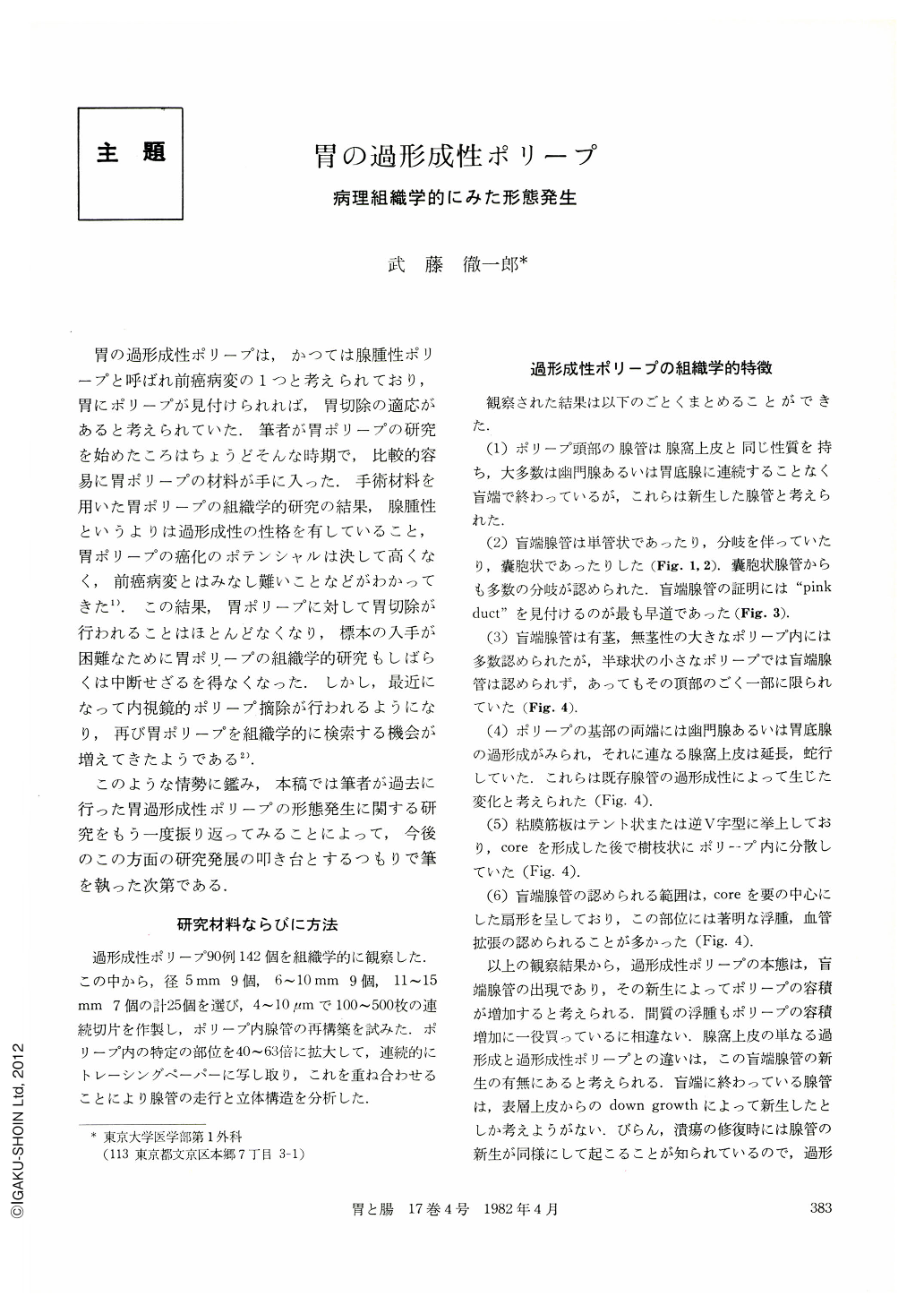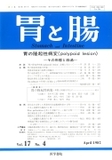Japanese
English
- 有料閲覧
- Abstract 文献概要
- 1ページ目 Look Inside
胃の過形成性ポリープは,かつては腺腫性ポリープと呼ばれ前癌病変の1つと考えられており,胃にポリープが見付けられれば,胃切除の適応があると考えられていた.筆者が胃ポリープの研究を始めたころはちょうどそんな時期で,比較的容易に胃ポリープの材料が手に入った.手術材料を用いた胃ポリープの組織学的研究の結果,腺腫性というよりは過形成性の性格を有していること,胃ポリープの癌化のポテンシャルは決して高くなく,前癌病変とはみなし難いことなどがわかってきた1).この結果,胃ポリープに対して胃切除が行われることはほとんどなくなり,標本の入手が困難なために胃ポリープの組織学的研究もしばらくは中断せざるを得なくなった.しかし,最近になって内視鏡的ポリープ摘除が行われるようになり,再び胃ポリープを組織学的に検索する機会が増えてきたようである2).
このような情勢に鑑み,本稿では筆者が過去に行った胃過形成性ポリープの形態発生に関する研究をもう一度振り返ってみることによって,今後のこの方面の研究発展の叩き台とするつもりで筆を執った次第である.
A total number of 142 hyperplastic polyps was histologically investigated and 25 polyps were examined by serial sectioning in order to find more detailed histologic characteristics. The basic characteristics of the hyperplastic polyp were as follows:
1) Presence of new-born ducts of foveolar type which don't connect to the pyloric or fundic glands.
2) These blind ducts may be tubular or cystic with/without branching. Eosinophilic duct, ‘pink duct’, is a good example of a blind duct.
3) The muscularis mucosae of the polyp shows inverted V shape with central core and splits into the polyp-head distally.
4) Interstitial edema and vascular congestion seems to play some role in the increased size of the polyp.
5) The polyp-stalk has no relation to the true nature of the polyp.
According to the difference of site and histologic features hyperplastic polyps were subgrouped into three types; pyloric, common and foveolar type and morphogenesis of each types was schematically described. It became clear that hyperplastic polyps have only rare malignant potential from these histologic investigations.
In contrast to the hyperplastic polyp a new disease entity of “foveolar adenoma” with much higher malignant potential was proposed.

Copyright © 1982, Igaku-Shoin Ltd. All rights reserved.


